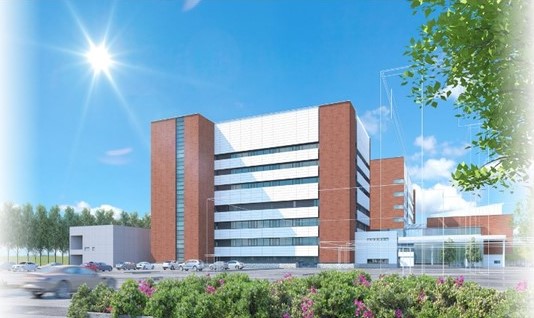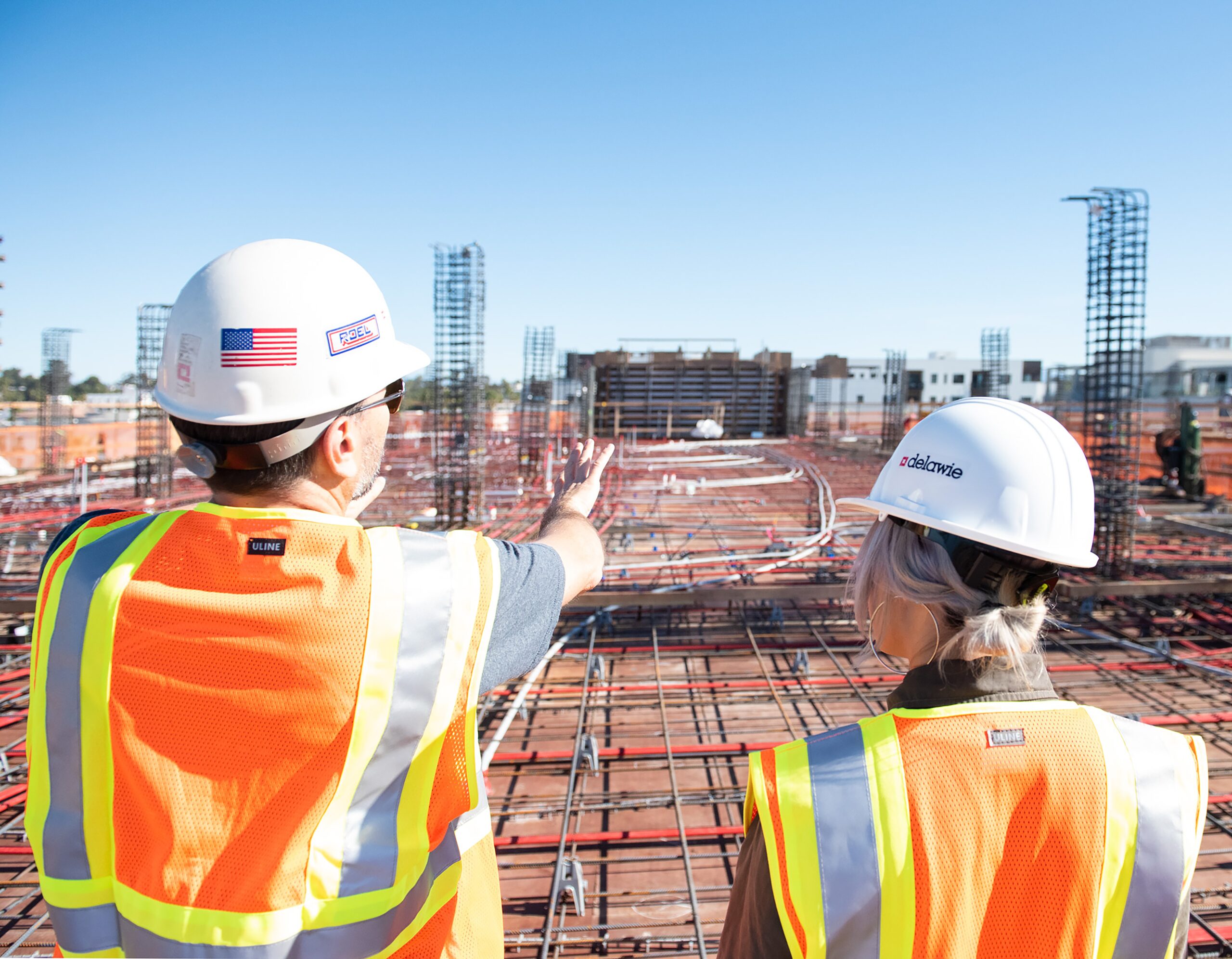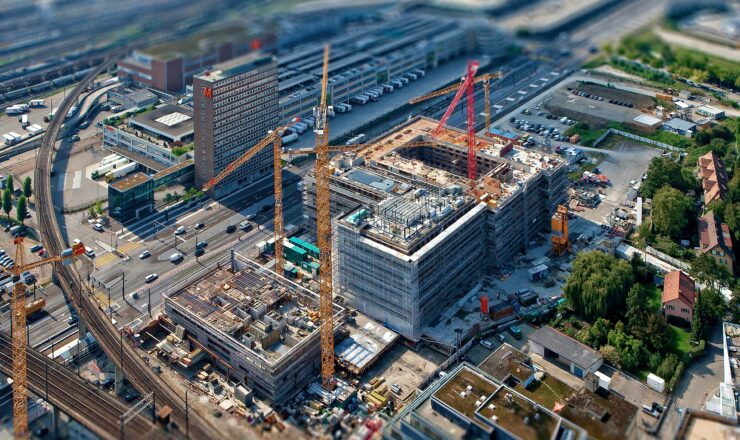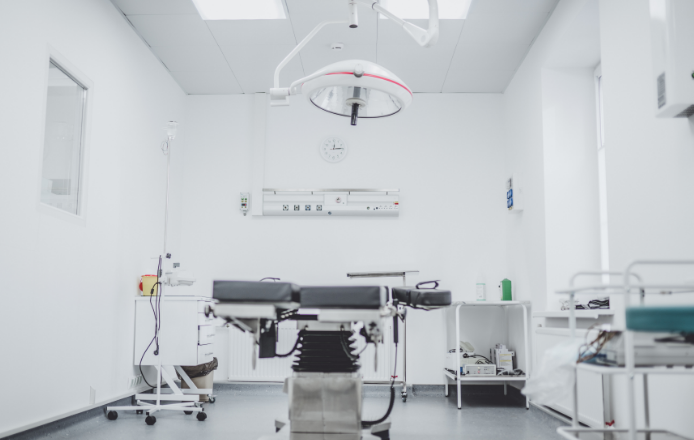
Tohoku Medical and Pharmaceutical University Hospital, New University Hospital Building Development
In response to the recovery from the Great East Japan Earthquake in 2011 and the shortage of doctors in the Tohoku region, it was decided to establish a medical school at Tohoku Pharmaceutical University under the condition of “one location in the Tohoku region,” and Tohoku Medical and Pharmaceutical University was established in 2016. The establishment of the medical school was the first in 37 years since the University of the Ryukyus (Okinawa Prefecture) in 1979.
Tohoku Medical and Pharmaceutical University Hospital’s predecessor, Tohoku Pharmaceutical University Hospital, was completed in 1982 and had been in operation for 36 years. To address overcrowding and enhance medical functions, a basic plan was initiated in 2015, and ITEC was awarded the contract to support the formulation of the basic plan through a designated proposal. Consistent support was provided from there until the opening of the new university hospital building in April 2019.
This plan aimed to transform Tohoku Pharmaceutical University Hospital (466 beds), which had been responsible for general acute care, into a 600-bed university hospital providing advanced medical care in the Sendai medical area and neighboring medical areas. The new building was constructed to provide advanced medical care, enhance cancer treatment, establish training functions, and create a hospital infrastructure that can flexibly respond to future medical needs.
In carrying out the development of the new building, Nikken Sekkei Ltd, responsible for project management and design work, collaborated with ITEC, the consultant, from the basic planning stage. By conducting thorough consultations and discussions with university stakeholders, the project was advanced while ensuring alignment between software and hardware from the upstream stages.
The new Tohoku Pharmaceutical University Hospital increased its bed count from 466 to 616 and includes nine operating rooms, including robotic surgery rooms, hybrid operating rooms, and bio-clean rooms. It also has 14 all-private ICU beds, a women’s ward, and high-functioning equipment such as a linear accelerator in the radiation therapy room and imaging diagnostic rooms. This setup enables the provision of more advanced and cutting-edge medical care, establishing a system truly befitting a university hospital.
Key Success Points
Visualization of the New Hospital’s Business Model
A business model simply visualized by an experienced medical consultant team specializing in forecasting future medical demand was proposed. The easy-to-understand business model, which everyone can share, clarified the challenges towards the goal and served as a guide for advancing the plan in collaboration with many stakeholders with a common understanding.
Formulation of Basic Plans and Design Conditions for the Development of the New University Hospital Building with a View to the Future
The approach included: ① External environment survey: Confirming the situation and future forecasts regarding the number of patients in the Sendai medical area and the inflow and outflow of patients across medical areas, and understanding the medical services lacking in each medical area. ② Internal environment survey: Confirming the strengths and weaknesses of the current hospital’s role in the region, patient share, and management status. ③ Benchmark analysis with other hospitals centered on university hospitals: Benchmarking the roles, functions, operational data, and management indicators of hospitals positioned in the desired direction to clarify the enhancement of current hospital functions, expansion functions, new functions to be developed, and their priorities.
Based on the analysis of ① to ③, the basic concept (overall plan) for the new hospital development, including the key points, roles, and priority functions of the new hospital, the number of beds, and the expected number of outpatients, was formulated.
Additionally, based on the overall plan, “department plans” were formulated, detailing the functions, operations, staffing, room configurations, and facility layout conditions for each department. The formulation of department plans involved multiple hearings and working sessions with staff from each hospital department, followed by policy decisions by the new hospital development committee, which included university executives. This led to the preparation of the “design conditions document” for the next step, the basic design.
Renovation Plan for the Existing Hospital Accompanying the Expansion of the New University Hospital Building
As the surgical and radiation-related departments in the existing building were relocated to the new university hospital building, the plan aimed to utilize the vacated space to enhance the functions of the departments in the existing building and expand the cramped rooms. This was to achieve the provision of advanced medical care and efficient hospital operations befitting a university hospital.
In renovating the existing facilities, the plan aimed to minimize renovation costs by developing the necessary rooms for medical functions while sharing rooms with other departments as much as possible, considering patient and staff flow. The renovation plan for the existing building included: ① Establishing and expanding outpatient consultation rooms for each department, ② Expanding the emergency center, ③ Expanding the outpatient chemotherapy room, ④ Expanding the endoscopy center, and ⑤ Developing the admission and discharge center and consultation rooms, thereby achieving the provision of acute care as a university hospital.
As a specific proposal by ITEC, in expanding the endoscopy center, the cost-effectiveness was verified by estimating the renovation and medical equipment costs and the increased revenue based on the current hospital’s endoscopy examination and treatment performance data. This supported decision-making on what rooms should be developed in the limited space.
Support for Opening Preparations for Smooth Operation of the New Hospital
Hospital facility reconstruction is generally said to occur once every 30 to 40 years, and it had been over 35 years since the completion of the existing building at our hospital. Therefore, there were almost no university or hospital staff with experience in developing or relocating new hospitals. ITEC, with extensive experience in hospital reconstruction and relocation, took the lead in supporting the overall opening preparations, including operational planning for the new hospital, medical equipment development, patient and goods transfer from the existing facility to the new university hospital building, pre-operation rehearsals, and staff training.
The relocation plan to the new university hospital building was based on the following principles: ① Prioritizing patient safety and minimizing risks associated with the relocation. ② Ensuring thorough preparations, including training and rehearsals, to facilitate smooth operations of both the existing and new university hospital buildings before and after the relocation. ③ Minimizing the impact on hospital management as much as possible. By supporting the development of restriction plans for surgeries, admissions, and emergencies, the relocation plan for radiation equipment, the creation of a comprehensive operational manual for the new hospital, and the implementation of comprehensive operational rehearsals to ensure smooth operations, the new university hospital building was successfully opened without any issues.
Contact Us
Service

Advisory Services
READ MORE
Hospital Project PM/CM
READ MORE
ODA projects
READ MORE
Entering Healthcare Business (Overseas)
READ MORE
Hospital Reconstruction/New Construction
READ MORE
Procurement, Renewal, and Management of Medical Equipment
READ MORE
the Implementation of Medical Information Systems (ICT)
READ MORE
Revenue Improvement
READ MORE
Accreditation of Hospital Functionality
READ MORE
Mid-term planning
READ MORE
Surveys and Analyses
READ MORE
